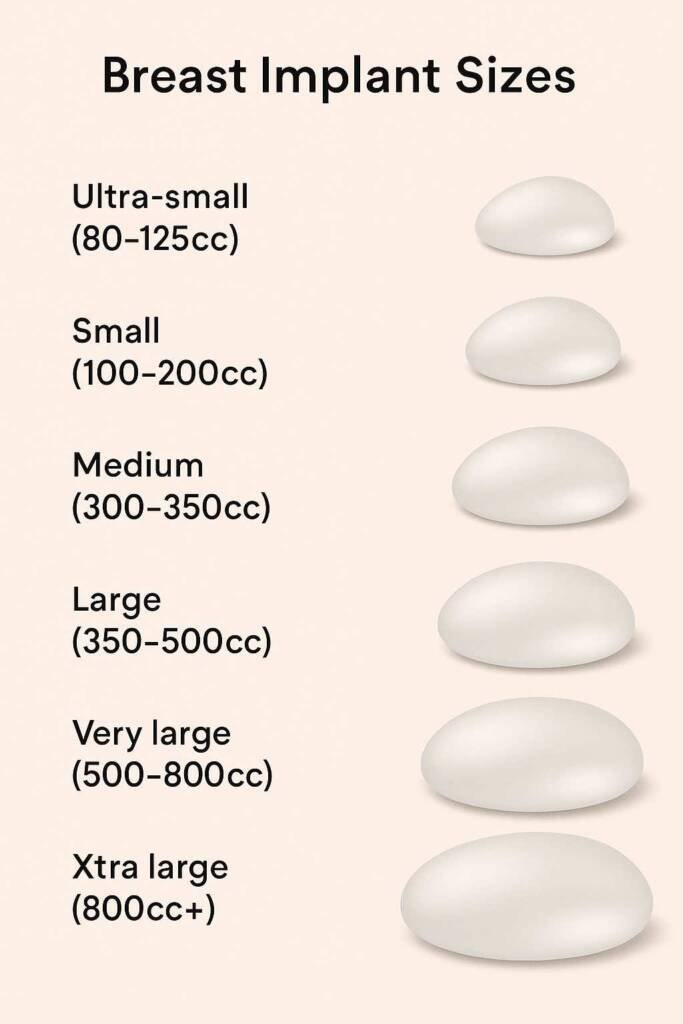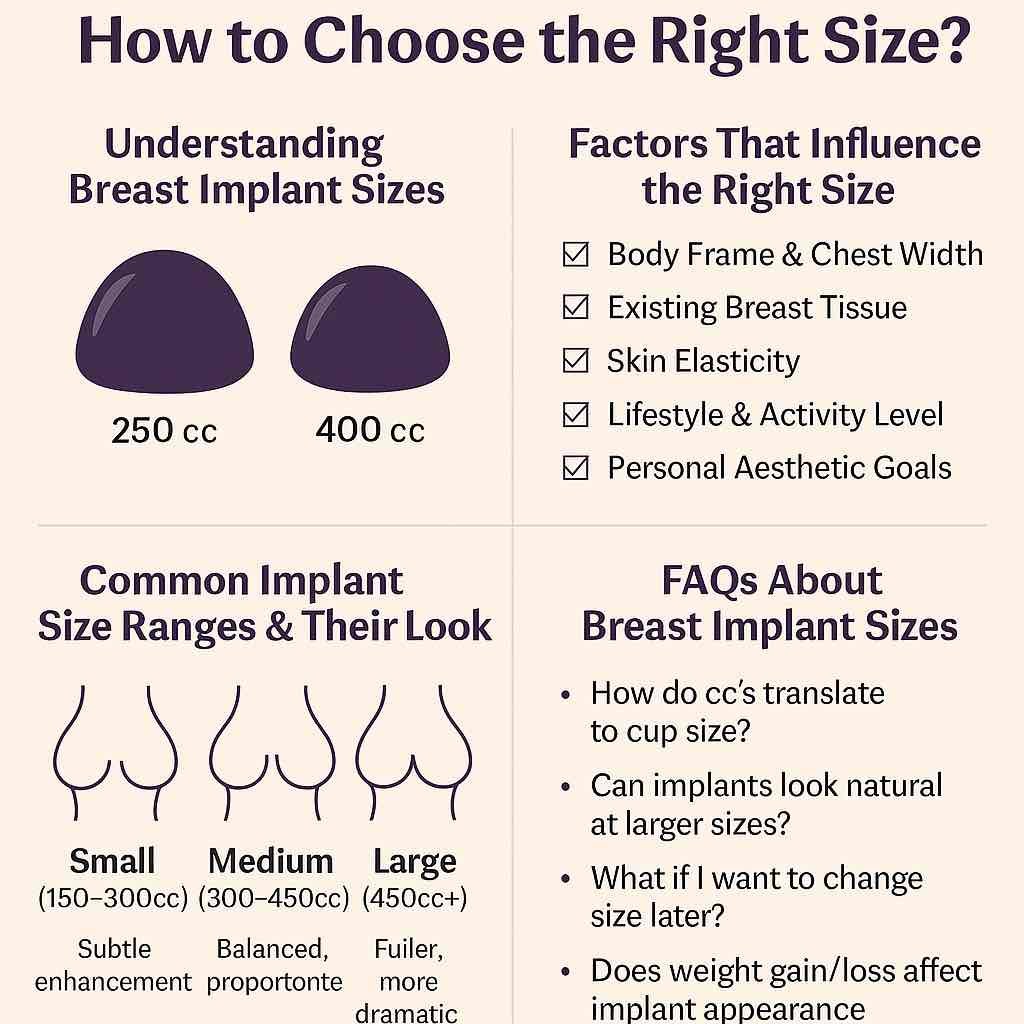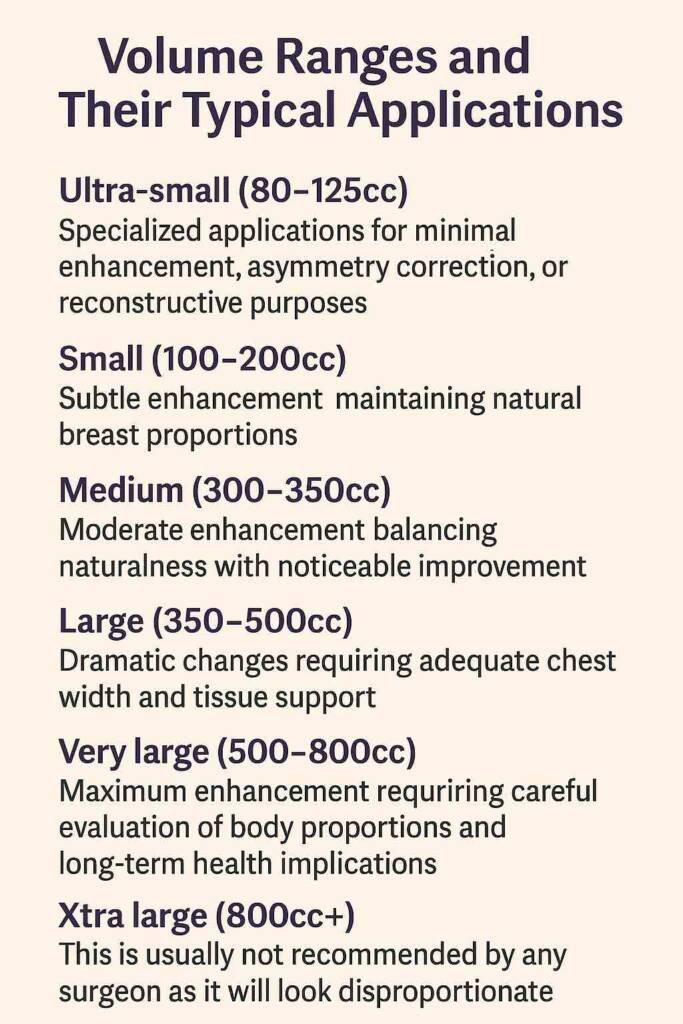Standing in front of the mirror, many women have wondered: “What would I look like with fuller breasts?” The desire for breast enhancement is deeply personal of feeling more confident in one’s own skin. Modern breast augmentation has evolved far beyond the one-size-fits-all approach of decades past.
Breast augmentation has exceptional patient satisfaction. Women report it to being one of the most worth it procedures with 98% report their results meet or surpass their initial expectations.
What makes one woman’s 400cc transformation subtle while another’s 300cc enhancement appears dramatic? Why do some patients immediately know their perfect size while others agonize over every cubic centimeter? The answers lie in understanding that breast augmentation isn’t just about adding volume—it’s about harmonizing new proportions with your existing anatomy, lifestyle, and personal aesthetic vision.
Whether you’re seeking subtle enhancement that maintains your natural proportions or a more dramatic transformation, the key lies in making an informed decision that aligns with your anatomy, lifestyle, and long-term goals.
Breast Implant Sizing
Breast implant sizes are measured in cubic centimeters (cc), indicating the precise volume of saline or silicone gel contained within the implant. This standardized measurement system ensures consistency across all manufacturers and implant types, providing reliable data for surgical planning.
Volume ranges and their typical applications:
- Ultra-small (80–125cc): Specialized applications for minimal enhancement, asymmetry correction, or reconstructive purposes
- Small (100–200cc): Subtle enhancement maintaining natural breast proportions
- Medium (300–350cc): Moderate enhancement balancing naturalness with noticeable improvement
- Large (350–500cc): Dramatic changes requiring adequate chest width and tissue support
- Very large (500-800cc): Maximum enhancement requiring careful evaluation of body proportions and long-term health implications
- Xtra large (800cc+): Rarely recommended due to disproportionate appearance and increased complication risks
Approximately 150–200cc provides about one cup size increase, though individual results vary significantly. The variation depends on body frame and existing breast tissue. The most common breast implant size is between 350cc–500cc, providing natural-looking results across various body types.

Breast Implant Profiles
Implant profile determines forward projection from the chest wall. This directly affects final breast shape and appearance even with identical volumes. Understanding profiles is crucial for achieving your desired aesthetic.
1. Low Profile creates wider bases with minimal forward projection. This design produces naturally sloped appearances, ideal for patients with broader chest measurements.
2. Moderate Profile offers balanced width and projection that suits most body types. It provides natural-looking results for the majority of patients.
3. High Profile features narrower bases with greater forward projection. This creates dramatic cleavage and upper pole fullness, perfect for patients with narrower chest widths.
4. Extra High Profile delivers maximum projection from the smallest base width. This option is typically reserved for revision cases or patients seeking very dramatic results.
Breast implant base diameters typically range from 7.4 cm to 17.2 cm, accommodating both petite and broader chest anatomies. Narrower bases suit petite frames while wider bases accommodate broader chest walls. The chosen profile significantly affects clothing fit, cleavage appearance, and overall breast shape.
Volume vs. Final Bra Cup Size
Implant volume does not directly correlate to specific cup sizes. Bra sizing varies significantly between manufacturers. Generally, every 150cc to 200cc equals approximately one cup size increase.
This relationship depends heavily on several factors. Existing breast tissue quantity and quality play a major role. Individual chest width, body frame, and natural breast tissue distribution also influence results.
Patients should focus on achieving proportional results rather than targeting specific cup sizes. Surgeons rely on cc measurements rather than desired cup sizes for accurate surgical planning. Cup size consistency differs dramatically between bra brands.
Shell Surface: Smooth vs. Textured
Smooth Implants
Smooth-walled implants have a soft, slippery surface that allows natural movement within the breast pocket. They tend to move more freely, creating natural breast movement during physical activity. Smooth implants are associated with lower rates of certain complications and are easier to replace if revision becomes necessary.
The mobile nature of smooth implants helps prevent excessive scar tissue formation in many cases. They provide natural movement that closely mimics natural breast tissue dynamics.
Textured Implants
Textured implants feature a rough surface designed to encourage tissue adherence, theoretically reducing the risk of capsular contracture and implant displacement. The tissue grows into the textured surface, creating a more stable position.
Shape Options: Round vs. Anatomical
Round Implants
Round implants provide fullness in both the upper and lower portions of the breast. They create excellent cleavage and upper pole fullness that many patients desire. Round implants cannot rotate out of position, eliminating concerns about shape distortion over time.
These implants work well for most patients seeking traditional breast augmentation results. They provide consistent results regardless of positioning and are typically less expensive than anatomical options.
Anatomical (Teardrop) Implants
Anatomical implants mimic the natural slope of the breast, with more fullness in the lower portion and a gentle slope toward the upper chest. They provide more natural-looking results, particularly for patients with minimal natural breast tissue.

How to Choose the Best Breast Implant Size? Factors to Consider
Individual body characteristics dramatically impact how different sizes appear. Your unique anatomy, tissue quality, and life circumstances all play crucial roles in determining the most suitable implant size.
1. Body Frame & Chest Width
Body frame analysis serves as the foundation for appropriate implant selection.
Petite Frames (Under 5’4″ with narrow shoulders) Smaller body frames typically look best with conservative sizing between 200-400cc. What might appear subtle on a taller woman can create dramatic results on a petite frame. Your surgeon will measure your chest width to ensure implants don’t extend beyond your natural breast boundaries, which could create an unnatural wide-set appearance.
Medium Frames (5’4″-5’7″ with proportionate shoulders) Medium frames offer the most flexibility in sizing, typically accommodating 300-500cc comfortably. This range allows for both natural enhancement and more dramatic transformations while maintaining proportion with your overall body structure.
Larger Frames (Over 5’7″ with broader shoulders) Taller women with broader frames can often accommodate larger volumes (400-600cc+) without appearing disproportionate. However, size alone doesn’t determine the right choice—your existing breast tissue and aesthetic goals remain crucial factors.
Chest width and breast base measurements determine maximum implant diameter for proper positioning. Implants extending beyond natural breast boundaries create unnatural spacing or uncomfortable side spillage. The distance between breasts also influences selection.
2. Existing Breast Tissue
The amount and quality of your natural breast tissue significantly influences both implant selection and final appearance. This factor often surprises patients who assume implant size alone determines results.
Minimal Breast Tissue (A cup or less) With limited natural tissue, every aspect of the implant becomes more visible and palpable. You’ll likely see more defined implant edges, potential rippling, and feel the implant more distinctly. Silicone implants typically provide better results than saline for thin-tissued patients. Size selection becomes more critical, as oversizing can create obvious artificial appearance.
Moderate Breast Tissue (B-C cup) Moderate existing tissue provides good coverage for implants, allowing for more size flexibility. You can often achieve dramatic increases while maintaining natural appearance because your tissue helps camouflage the implant edges and creates smoother transitions.
Substantial Breast Tissue (D+ cup) If you already have significant breast tissue but lack fullness or firmness, smaller implants (200-350cc) can often achieve dramatic improvements in shape and projection. The combination of your natural tissue plus implant volume creates full, natural-looking results.
Tissue Quality Considerations
Dense, firm tissue provides excellent implant support and coverage. Soft or stretched tissue (often from pregnancy or weight changes) may require more conservative sizing to prevent bottoming out or excessive stretching over time.
3. Skin Elasticity
Your skin’s ability to stretch and recover plays a crucial role in determining safe implant volumes and predicting long-term results.
Excellent Elasticity (Young, never pregnant)
Good skin elasticity allows for more dramatic size increases with better recovery. Your skin can accommodate larger volumes while maintaining smooth contours. However, this doesn’t mean bigger is always better—consider long-term effects of significant stretching.
Moderate Elasticity (Some life changes)
Most patients fall into this category. Your skin can accommodate reasonable size increases but may show some stretch marks or looseness with very large implants. Moderate increases typically provide the best balance of dramatic results with long-term skin health.
Limited Elasticity (Pregnancy, age, genetics)
Poor skin elasticity requires conservative sizing to prevent complications like bottoming out, wide spacing, or excessive skin stretching. However, smaller implants combined with a breast lift often provide excellent results by addressing both volume and position issues.
The Pinch Test
Your surgeon will perform elasticity tests by gently pinching your breast skin to assess its ability to stretch and recover. This objective measurement helps predict how your skin will respond to different implant volumes.
4. Lifestyle
Active individuals must consider how implant size affects performance and comfort during exercise. High-impact activities like running and jumping may feel uncomfortable with larger implants. Smaller to medium sizes typically cause less movement restriction.
Career requirements influence size selection significantly. Some professions benefit from subtle enhancement while others accommodate more dramatic changes. Physical job demands may necessitate smaller, more practical sizes for long-term comfort.
Daily comfort factors include sleep position preferences and clothing fit requirements. Stomach sleepers often prefer smaller implants to avoid pressure and discomfort. Long-term maintenance considerations also impact optimal size selection.
5. esthetic Goals
Your vision for your final appearance should guide the entire selection process. Be honest about whether you want subtle enhancement or dramatic transformation.
Natural Enhancement Goal: If you want results that look like you were “born with them,” focus on proportional increases that enhance your existing shape. This typically means staying within 1-2 cup sizes of your current size, using measurements rather than dramatic volume increases.
Choose implant profiles that complement your chest width. Avoid sizes that create cleavage you never had naturally. Natural results often mean others can’t tell you’ve had surgery.
Dramatic Transformation Goal: If you want obviously enhanced breasts with significant cleavage and fullness, larger volumes and higher profiles create these results. However, dramatic doesn’t mean disproportionate—your anatomy still sets limits for attractive results.

How These Factors Work Together
Many patients find happiness in the middle ground—noticeable improvement that enhances confidence without dominating their appearance. This often means moderate sizes (300-450cc) that provide significant enhancement while maintaining proportion with your frame.
No single factor determines your ideal implant size—they all interact to create your optimal range. A petite woman with excellent skin elasticity might accommodate larger sizes than expected, while a taller woman with limited breast tissue might look best with smaller volumes.
Your surgeon’s expertise lies in evaluating all these factors together and helping you find the sweet spot where your anatomy, lifestyle, and aesthetic goals align. The best size for you balances all these considerations to create results you’ll love for years to come.
According to the American Society of Plastic Surgeons—85 percent of women rated their implant size as ‘just right,’ while 13 percent wished they’d chosen a larger size and fewer than 2 percent would have preferred a smaller one. This suggests value in considering the upper range of recommended sizes during initial selection. Future flexibility should weigh heavily in your decision-making process.
Healing Timeline
First Week: Expect significant swelling and implants sitting high on the chest. This unnatural appearance is temporary and normal. Most patients return to desk work within a week.
Weeks 2-8: The “drop and fluff” process begins as implants settle and soften. Swelling decreases and breast shape improves. Normal activities can resume, but exercise remains restricted.
Months 3-6: About 80% of final results are visible. Exercise restrictions are typically lifted. This is when most patients experience psychological adjustment to their new appearance.
6+ Months: Final results are apparent. Scars fade and sensation normalizes, though some permanent sensitivity changes may occur.
Key Factors Affecting Results
Individual Differences: Age, genetics, skin elasticity, and healing ability all influence final outcomes. Younger patients with good skin typically see more predictable results.
Implant Placement: Submuscular placement takes longer to settle but looks more natural. Subglandular placement settles faster but may show more rippling in thin patients.
Size Impact: Larger implants require more settling time and may never feel completely natural. Conservative sizing provides more predictable, natural results.
Setting Yourself Up for Success
Focus on overall improvement rather than specific cup sizes or measurements. Minor asymmetries are normal in both natural and augmented breasts.
Communicate honestly with your surgeon about your goals and review photos of similar body types. Remember that implants aren’t lifetime devices and may require future maintenance.
Patients with realistic expectations consistently report higher satisfaction rates. The vast majority say their results exceeded expectations and would choose to have the procedure again.
Common Mistakes to Avoid
1. Relying on Cup Size Alone
The Problem: Walking into a consultation saying “I want to be a D cup” sets you up for disappointment. Cup sizes vary dramatically between bra manufacturers and don’t account for your unique anatomy.
Why It Doesn’t Work: A 34D bra has completely different measurements than a 32D or 36D. The same 400cc implant might make one woman a full C cup while making another a small D cup, depending on their ribcage size and existing tissue.
The Better Approach: Focus on proportional improvement rather than specific cup letters. Work with your surgeon using CC measurements and visual aids like sizers or 3D imaging. Discuss how you want to look in clothes and swimwear rather than targeting arbitrary cup sizes.
2. Ignoring Surgeon’s Advice About Anatomy Limits
The Problem: Insisting on implants that exceed your anatomical limitations despite professional recommendations. This often happens when patients have unrealistic expectations about what their body can accommodate.
Why Surgeons Set Limits: Your chest width, skin elasticity, and tissue quality create hard limits for safe, attractive results. Exceeding these limits leads to complications like: Implants touching in the center (symmastia), excessive side spillage creating wide-set appearance, bottoming out or implant displacement, visible rippling and unnatural shape and increased risk of capsular contracture.
The Better Approach: Trust your surgeon’s expertise and measurements. If multiple board-certified surgeons give similar size recommendations, listen to them. They’ve seen thousands of cases and understand what works long-term.
3. Choosing Size Based on Trends or Celebrity Influence
The Problem: Selecting implants to match a celebrity’s look or follow current social media trends without considering your unique body and lifestyle.
Why This Backfires: Celebrities often have different body proportions, professional styling, and photo editing. Social media images are heavily filtered and don’t represent real-life appearance. Trends change, but your implants are a long-term commitment and what looks good in photos may not translate to your daily life.
The Reality Check: That influencer’s “natural looking” breasts might be 600cc implants on a 5’8″ frame with perfect skin elasticity. The same size could look completely artificial on your 5’3″ petite build.
The Better Approach: Bring photos as inspiration, but understand they’re starting points for discussion and focus on achieving your best proportions rather than copying someone else. Think about how you’ll feel about the results in 10-15 years
Long-term Consequences: Following trends often leads to choosing implants too large for sustainable comfort and natural aging. When trends shift, you’re left with permanent changes that may feel dated.
Additional Mistakes to Watch For
- Rushing the Decision: Taking weeks or months to choose is normal and wise. Don’t let anyone pressure you into quick decisions about permanent body changes.
- Focusing Only on Initial Results: Consider how your choice will age with your body. Very large implants may look great at 25 but cause problems at 45.
- Ignoring Lifestyle Impact: That 500cc implant might look amazing in photos but make your favorite workout uncomfortable for decades.
- Choosing Based on Price Alone: The cheapest option often leads to the most expensive long-term costs through revisions and complications.
How to Avoid These Mistakes
Do Your Research: Understand the procedure, healing process, and long-term commitments before your consultation.
Choose the Right Surgeon: Board certification, extensive before/after galleries, and good communication are essential.
Be Honest About Goals: Clearly communicate what you want to achieve and listen to professional feedback about realistic expectations.
Take Time: Good decisions aren’t rushed. Sleep on it, discuss with trusted friends or family, and make sure you’re choosing for the right reasons.
Think Long-term: Consider how your choice will serve you throughout different life stages, not just right now.
The best implant size for you balances your aesthetic goals with anatomical reality and long-term satisfaction. Avoiding these common mistakes helps ensure you’ll love your results for years to come.
FAQs
Will the same implant size look different on different women?
Yes. A 350cc implant can look modest on someone tall with a wide chest, but quite full on someone petite with a narrow frame. Body shape, breast tissue, and chest anatomy all influence how implants appear.
Can I breastfeed with implants?
Most women with implants can breastfeed successfully, especially if the implant is placed under the muscle and the incision avoids the nipple area. However, there is a small chance breast surgery can affect milk supply.
What’s the difference between a “natural” look and a “augmented” look?
The difference often comes down to implant profile and placement. A lower-profile implant with gradual projection tends to look softer and more natural, while higher-profile implants create more noticeable cleavage and roundness.
Do implants feel different depending on size?
Smaller implants often feel more like natural breast tissue, especially if you already have some volume. Larger implants, particularly if placed over the muscle, may feel firmer or less natural to the touch.
Dr. K Miami’s Personalized Approach to Help You Choose the Right Breast Implant
Dr. Bart Kachniarz brings Harvard Medical School and Johns Hopkins training to every consultation. This ensures world-class expertise in breast augmentation procedures. Unlike high-volume surgical centers, Dr. K Miami’s boutique practice approach limits surgical schedules.
This selective approach ensures each patient receives undivided attention and meticulous care. Dr K Miami streamlines the consultation the breast augmentation process through detailed pre-consultation questionnaires. These assess aesthetic goals and lifestyle factors, allowing surgeons to prepare personalized recommendations.
Specialized patient care coordinators facilitate relaxed sizing sessions. They provide additional perspective and support throughout the decision-making process. This comprehensive support system maximizes consultation effectiveness.
Ready to Begin Your Journey?
Choosing the right breast implant size is a deeply personal decision that deserves expert guidance. Your unique anatomy and aesthetic vision require tailored recommendations. Dr. K Miami offers free initial consultations where Dr. Kachniarz personally evaluates and see if breast augmentation is right for you. Experience the difference personalized expertise makes in achieving the natural, beautiful results you deserve.



